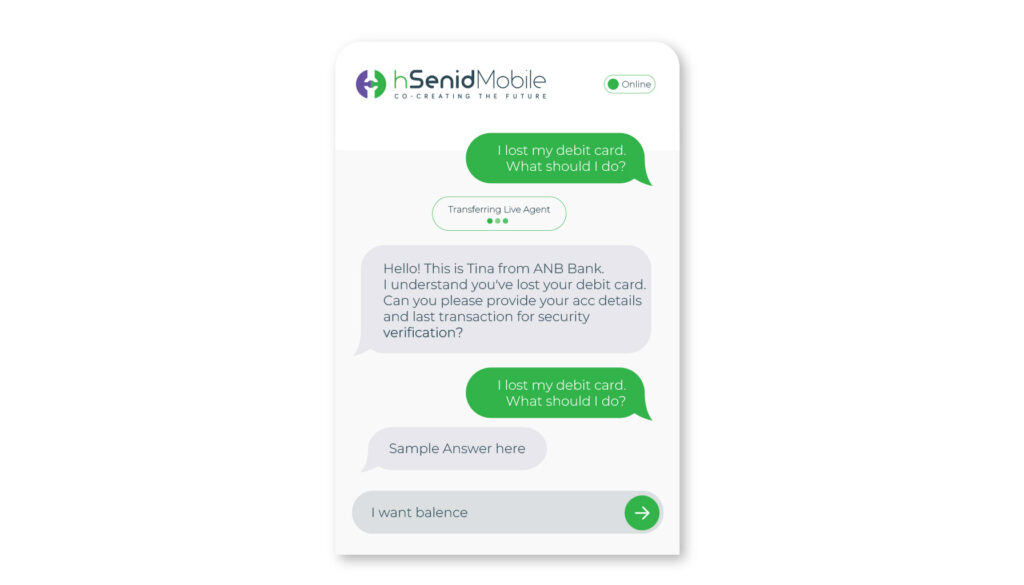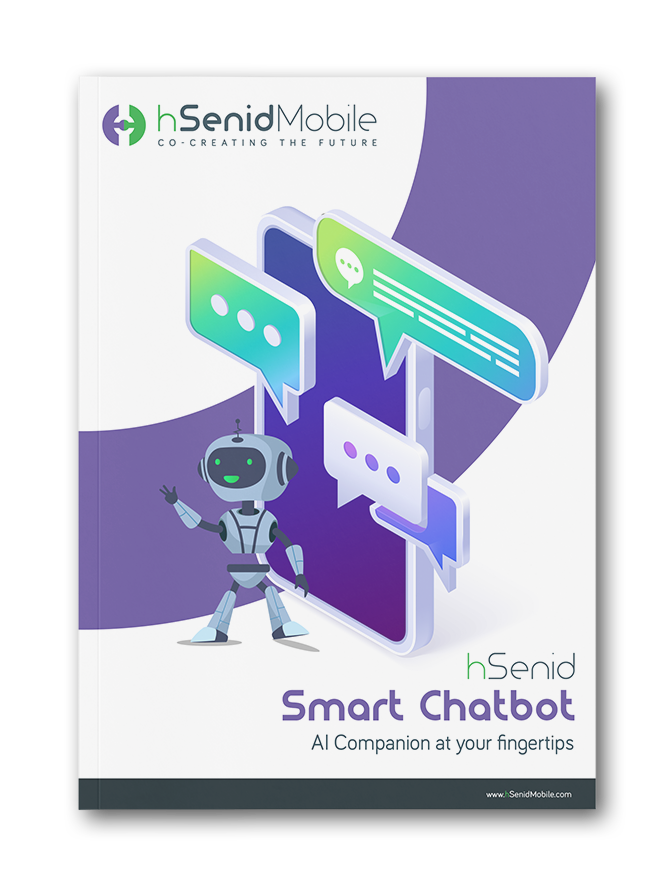Gone are the days when traditional chatbots could meet the evolving needs of
customers. Today, delivering exceptional support requires a new breed of
intelligence: smart chatbots. These cutting-edge solutions, powered by
advanced technologies like natural language processing and visual recognition,
are poised to redefine the customer service landscape. As businesses gear up
for the next wave of innovation, the rising adoption of AI-enabled chatbots is
impossible to ignore. Let’s explore how AI chatbots are transforming customer
interactions.
AI chatbots can also be tailored to meet the unique needs of an industry through specialized LLMs. With an in-depth knowledge-base of that sector, these AI chatbots can provide responses that are more detailed, accurate and relevant. For instance, AI chatbots with LLMs tailored to the banking sector can go beyond providing interest rates and opening accounts. They can offer information on compliance and risk, and so offer the kind of advice usually expected of a human expert.
AI chatbots can also be extremely empathetic and connect with customers at an emotional level. Through sentiment analysis, these chatbots are able to identify a user’s mood and adapt their responses accordingly. This emotional alignment makes for a far more fulfilling interaction, elevating customer satisfaction.
The predictive capabilities of AI chatbots also allow them to spot potential problems. By analyzing behavior and communication patterns, these chatbots can identify customers who are likely to churn. They can also forecast other customer service related problems that could arise. This enables the team to take preemptive action and thus prevent any damage and secure smooth customer service.
AI-powered conversations
Artificial intelligence has made chatbots far more useful and versatile. Thanks to AI chatbots’ natural language processing (NLP) capabilities, they are no longer limited to simple FAQs or straightforward question-answer type inquiries. These AI chatbots can now process complex queries and address a much wider range of customer requests and problems. And this process is made so much simpler for the customer, who does not have to worry about framing their questions in a specific manner or using keywords to get the answer that they are looking for.AI chatbots can also be tailored to meet the unique needs of an industry through specialized LLMs. With an in-depth knowledge-base of that sector, these AI chatbots can provide responses that are more detailed, accurate and relevant. For instance, AI chatbots with LLMs tailored to the banking sector can go beyond providing interest rates and opening accounts. They can offer information on compliance and risk, and so offer the kind of advice usually expected of a human expert.
AI chatbots can also be extremely empathetic and connect with customers at an emotional level. Through sentiment analysis, these chatbots are able to identify a user’s mood and adapt their responses accordingly. This emotional alignment makes for a far more fulfilling interaction, elevating customer satisfaction.
Predictive assistance
There is nothing that shows a customer that you value them as much as personalized recommendations. Suggestions that resonate with users make them feel special and give them the sense that they matter. AI chatbots harness vast amounts of customer data. The sophisticated algorithms enable these chatbots to make relevant suggestions that, because of how well suited they are, will tip the scales in terms of a purchase or action, which in turn will generate revenue for an organization.The predictive capabilities of AI chatbots also allow them to spot potential problems. By analyzing behavior and communication patterns, these chatbots can identify customers who are likely to churn. They can also forecast other customer service related problems that could arise. This enables the team to take preemptive action and thus prevent any damage and secure smooth customer service.
Self-learning abilities
Customer needs and requests are ever-changing and, in order to keep up with these constant shifts, enterprises need a chatbot that can keep evolving. This is where machine learning comes in. AI chatbots learn from every interaction and are constantly developing their own capabilities. This makes them exceptionally adaptable, with the ability to meet an ever-growing range of questions, needs and preferences. By staying in sync with external changes, these chatbots are a super effective customer service platform.
Visual recognition
Visual recognition technology in AI chatbots has revolutionized customer service across various industries, particularly in terms of authentication processes. In sectors such as banking, this innovation holds significant promise. By harnessing visual recognition capabilities, AI chatbots can swiftly and securely authenticate users, whether through facial recognition or other visual cues. This streamlined authentication not only expedites customer interactions but also bolsters security measures by reducing the risk of fraudulent activities.Furthermore, visual recognition facilitates personalized interactions, enabling chatbots to recognize returning customers and tailor responses based on their unique preferences and history. Consequently, customers benefit from smoother transactions, heightened satisfaction, and improved loyalty.
The more sophisticated visual recognition technology can also interpret visual cues such as facial expressions and gestures and so gauge the emotional state of customers. This capability empowers these chatbots to match responses and assistance to customer mood, fostering empathy and enhancing the overall customer experience. For instance, if a customer appears frustrated or confused, the chatbot can adjust its tone and provide additional support to alleviate their concerns effectively. Conversely, when a customer expresses happiness or satisfaction, the chatbot can reinforce those positive emotions by offering personalized recommendations or expressing delight in response.








